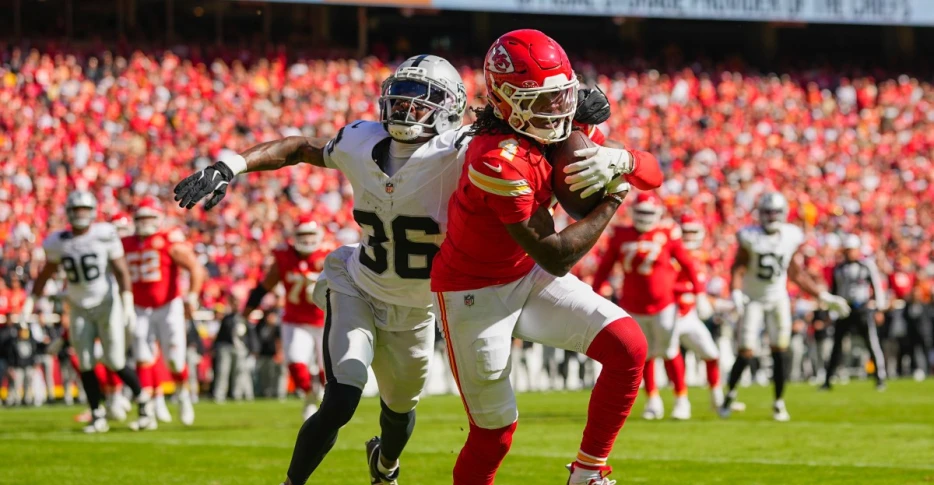
 Arrowhead Pride
Arrowhead Pride
Going into Sunday’s game between the Kansas City Chiefs and Las Vegas Raiders, I wanted to see what wide receiver Rashee Rice would do after more than a full calendar year off the field. In his absence, the offense had developed a rhythm without him, so I was curious to see how he would be used — and how much the team would put on his plate.
After Sunday’s 31-0 blowout, the Chiefs are sure to be happy that Rice is back — and will want to feature him often. He ran 16 routes and saw 10 targets. That is an absurd (and unsustainable) route-to-target ratio, but it does show Kansas City plans for Rice to be its featured receiver.
Let’s see how he was used in Sunday’s game.
Rice’s superpower is his ability to accelerate downfield after the catch, so the Chiefs will find as many ways as they can to get him going north. Jet sweeps, screens or these pop passes that get him an angle seem to work well.
Rice is also in a perfect situation to maximize this skill. Head coach Andy Reid designs screens and horizontal action better than any other NFL coach. He will never run out of creative ways to get Rice the football in space.
Kansas City’s offensive line now has five players who are very good in space and can move downfield; they’re all looking to de-cleat smaller defenders. Since Rice is a tackle-breaking machine, this is very helpful. This line is a great match for a play-caller who designs great screens — and a quarterback who can deceive any defense with his eyes and his arm talent.
While it wasn’t expected from his college tape, Rice has demonstrated a good feel for NFL zone coverages. (At SMU, he was a jump-ball receiver with limited opportunities to show what he could do in space).
This is more apparent when Rice plays in the slot, where linebackers and underneath defenders tend to play short zones more often than man coverage; it’s just easier for Rice to find holes against slower defenders. But even on the outside, Rice has a good feel for when to turn and present a target. If he can also develop good vertical routes from the outside — making teams fear him over the top — he can get more free receptions on stop routes.
Before his injury last season, the Chiefs were using Rice as a mismatch against linebackers on option routes. He would align as the weak-side No. 2 receiver — the slot receiver on the side with fewer receivers — which forced defenses into tough situations. If they want to play two deep safeties, then a linebacker must cover that receiver. They can also move a safety closer to the line of scrimmage, but this limits the available coverages — and gives valuable information to the offense.
Since most teams want...